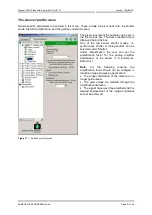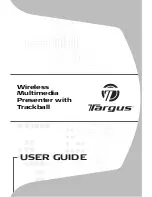
Version 1.08 (04/07)
Manual: CMOS Industrial Camera LOGLUX
i5
Page 22 of 46
KAMERA WERK DRESDEN GmbH
The ‚Output data‘ profile menu
In this menu, the user can select one of the built-in image data pre-processing functions and the user-
specific
look-up tables
(LUTs). These include bit rotation operations, inversions, and test image
generation.
Under 'Transfer mode' the user can select one
of the following functions:
•
Bypass
→
The image data are transferred
from the sensor to the image data interface
without being pre-processed.
•
Invert image
→
The image data are
subtracted from the constant 1024 which
results in an inversion of the image data.
•
n bit(s) shift right (1...9)
→
The image data
are shifted to the right bit by bit (by n bits).
Zeros are inserted at the
most significant bits
(MSB), the
lowest significant bits
(LSB) get
lost.
•
invert and n bit(s) shift right (1...9)
→
The
image data are subtracted from the constant
1024 which results in an inversion of the image
data. Subsequently, the image data are shifted
to the right bit by bit (by n bits). Zeros are
inserted at the
most significant bits
(MSB), the
lowest significant bits
(LSB) get lost.
•
n bit(s) shift left (1...9)
→
The image data
are shifted to the left bit by bit (by n bits). Zeros
are inserted at the
lowest significant bits
(MSB), the
most significant bits
(LSB) get lost.
•
invert and n bit(s) shift left (1...9)
→
The
image data are subtracted from the constant
1024 which results in an inversion of the image
data. Subsequently, the image data are shifted
to the left bit by bit (by n bits). Zeros are
inserted at the
lowest significant bits
(MSB),
the
most significant bits
(LSB) get lost.
•
User lookup table (1..3)
→
The image data
are linked up with the selected LUT. During the
process, 1024 user-specific function values are
assigned to each of the 1024 greyscale values.
•
Test image
→
This option results in the
display of a test image.
Figure 18 :
The ‚Output data‘ profile menu
















































